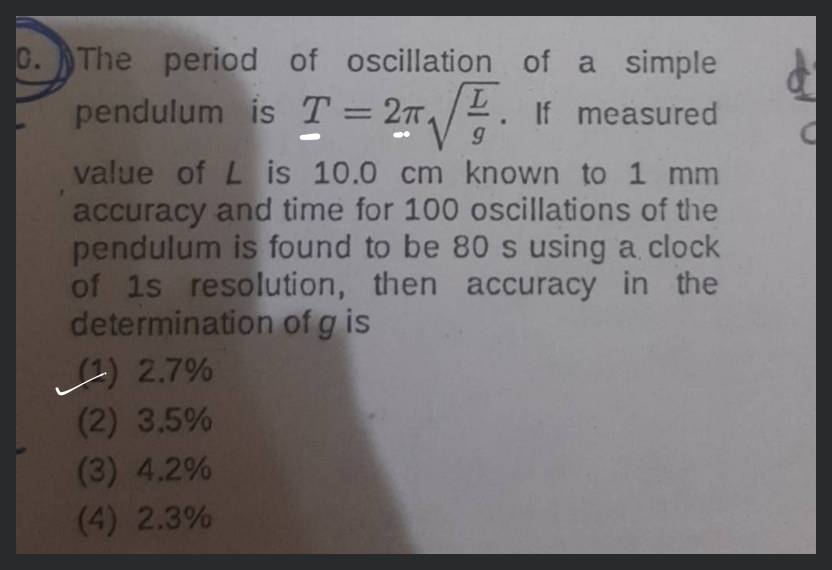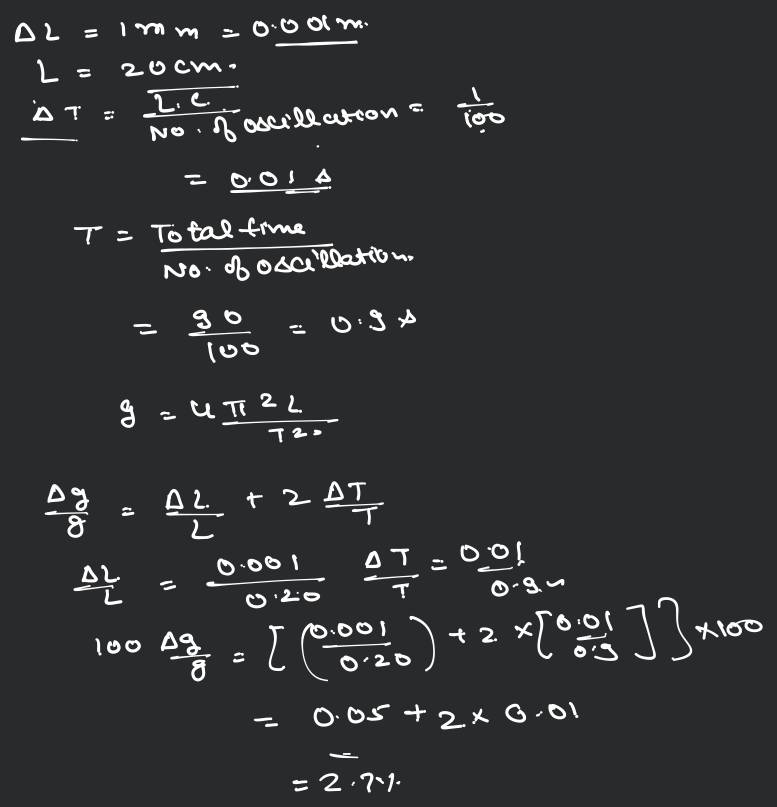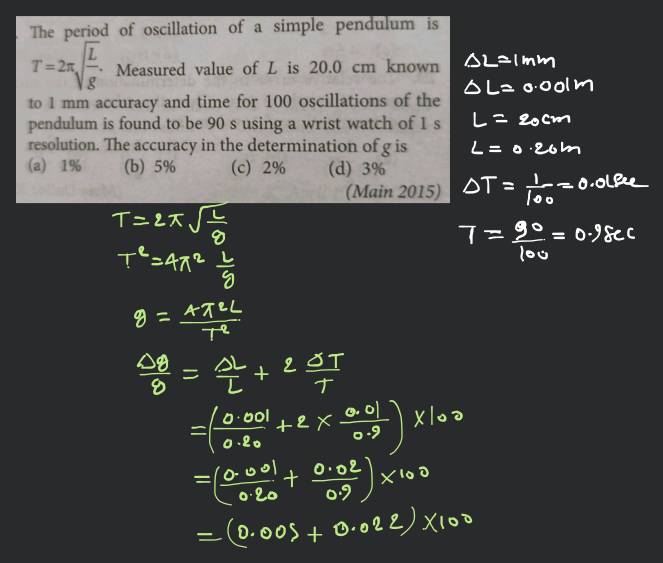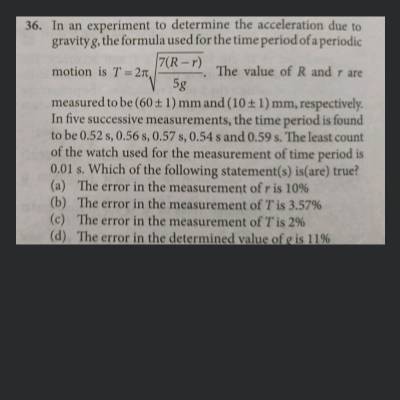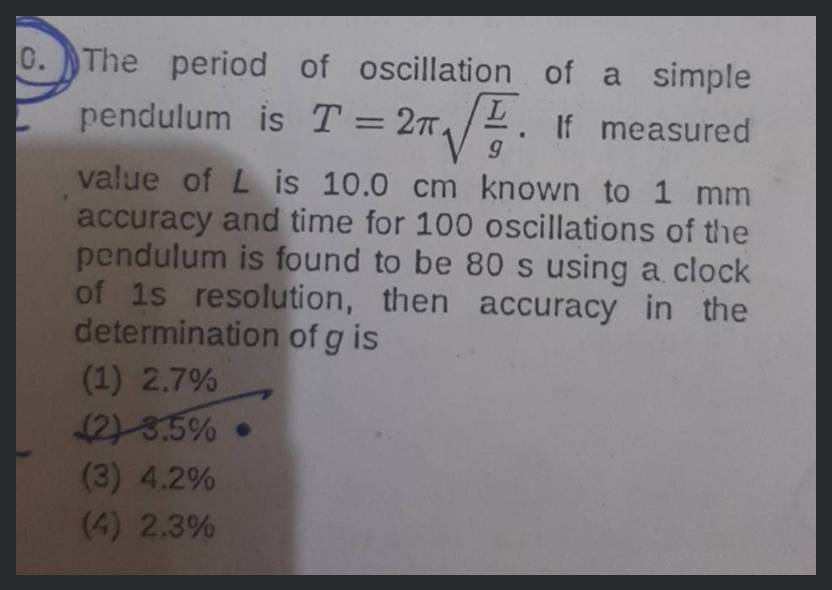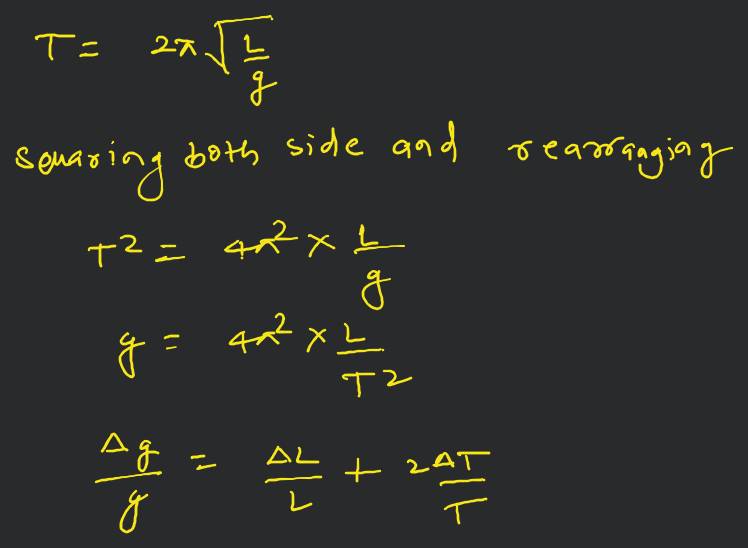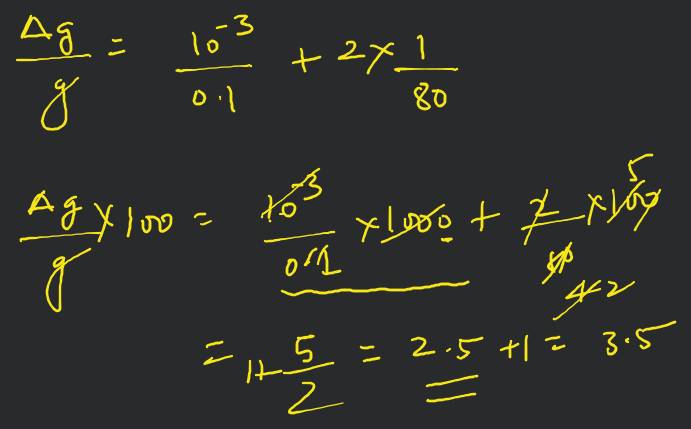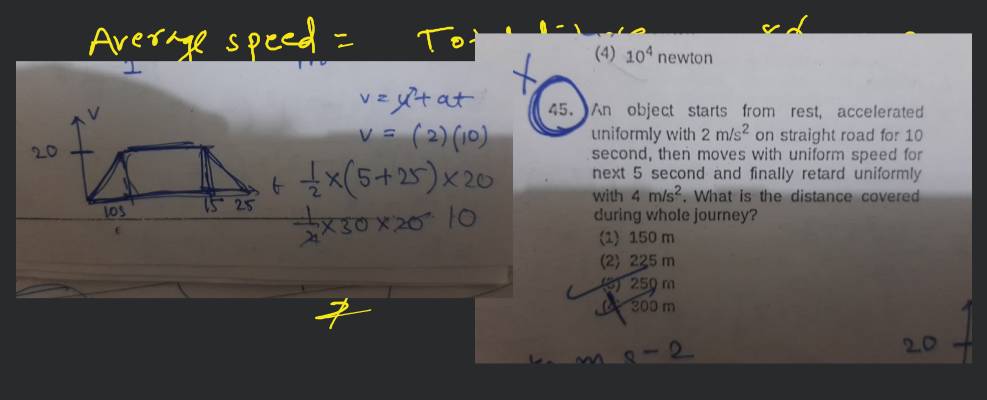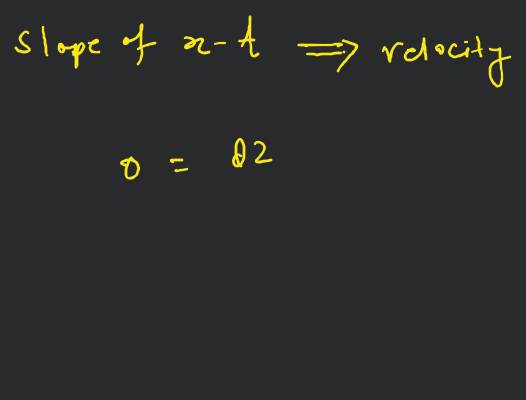Question
Medium
Solving time: 3 mins
The period of oscillation of a simple pendulum is . Measured value of is known to accuracy and time for 100 oscillations of the pendulum is found to be using a wrist watch of 1 s resolution. The accuracy in the determination of is
Found 3 tutors discussing this question
Discuss this question LIVE
10 mins ago
 Text solution
Text solution Verified
Verified
Given time period
Thus, changes can be expressed as
According to the question, we can write
Again time period
and
Now,
or
Thus, accuracy in the determination of is approx .
Thus, changes can be expressed as
According to the question, we can write
Again time period
and
Now,
or
Thus, accuracy in the determination of is approx .
Was this solution helpful?
64
Share
Report
Filo tutor solutions (8)
Learn from their 1-to-1 discussion with Filo tutors.
5 mins
Uploaded on: 6/30/2023
Was this solution helpful?
72
1
Share
Report
8 mins
Uploaded on: 9/15/2023
Was this solution helpful?
132
Share
Report

One destination to cover all your homework and assignment needs
Learn Practice Revision Succeed

Instant 1:1 help, 24x7
60, 000+ Expert tutors

Textbook solutions
Big idea maths, McGraw-Hill Education etc

Essay review
Get expert feedback on your essay

Schedule classes
High dosage tutoring from Dedicated 3 experts
Questions from JEE Mains 2015 - PYQs
Question 1
Medium
Views: 5,387
(a)
(b)
(c)
(d)
Question 2
Medium
Views: 5,661
(a)
(b)
(c)
(d)
Question 3
Medium
Views: 6,066
(a)
(b)
(c)
(d)
Question 4
Medium
Views: 5,165
(a)
(b)
(c)
(d)
Practice questions from Arihant Physics JEE Main Chapterwise Solutions (2019-2002) (Arihant)
Question 1
Medium
Views: 5,980
Question 2
Medium
Views: 5,947
Question 4
Medium
Views: 5,227
Practice questions from Oscillations in the same exam
Question 1
Hard
Views: 8,094
Question 2
Easy
Views: 5,767
Question 3
Medium
Views: 5,434
Practice more questions from Oscillations
Question 1
Medium
Views: 5,755
Question 2
Easy
Views: 5,217
Question 3
Medium
Views: 6,005
Question 4
Medium
Views: 5,420
Practice questions on similar concepts asked by Filo students
Question 1
Views: 5,675
Question 2
Views: 5,833
Question 3
Views: 5,590


Stuck on the question or explanation?
Connect with our Physics tutors online and get step by step solution of this question.
231 students are taking LIVE classes
| Question Text | The period of oscillation of a simple pendulum is . Measured value of is known to accuracy and time for 100 oscillations of the pendulum is found to be using a wrist watch of 1 s resolution. The accuracy in the determination of is |
| Updated On | Sep 15, 2023 |
| Topic | Oscillations |
| Subject | Physics |
| Class | Class 11 |
| Answer Type | Text solution:1 Video solution: 8 |
| Upvotes | 864 |
| Avg. Video Duration | 12 min |



